Abstract
In our day to day, technology and robotics are increasingly present. Currently, Information and Communication Technologies (ICT) are undergoing a vertiginous development and this is affecting practically all fields of our society and education is no exception. On the other hand, the incorporation of robotics in the classroom aims to promote learning experiences where students acquire and develop skills to solve specific problems, which allow them to acquire new knowledge and give answers to the changing environment of today’s world. This article presents the progress in the development of a project where robotics is implemented for the teaching of mathematics in preschool and first grade students; three public schools were selected for this purpose, and a series of playful educational activities were developed, using low cost robotic tools.
1. Introduction
Today’s society characteristics and those that are glimpsed for the next few years have a substantial impact on the structuring of educational processes at all levels and with this, new ways of conceiving the work that teachers carry out day by day arise. The complexity of new challenges leads to transform the role of students and teachers, as well as the materials supporting their work, such is the case of school curriculums and textbooks used. In this context, mathematics does not escape this reality.
On the other hand, Information and Communication Technologies (ICT) and robotics have made great contributions in the dynamization of teaching methods applied to students, however, some experts believe that the pace at which these educational activities are transformed could improve, as it can be seen in what Carlos Magro [1] says: «The change of education through technology is still a pending issue». Digital technology has become an addition to education and not a priority given that in many educational centers, technology is not implemented due to geographic, economic or political factors that interfere in its acquisition and accessibility.
The process of implementing ICT in education not only involves the use of the tools, given that the student is educated about its operation, possibilities for modification and creation of a new tool based on principles and basic concepts. To make this possible, it’s necessary to generate technological innovation projects that benefit the students. Educational robotics is one of the tools used in education, but what is robotics? It’s the discipline in charge of studying the design and construction of machines or equipment capable of performing specific tasks [2]. It’s in this scenario that this project is developed which general objective is to design, develop and implement innovative resources for the improvement of the teaching-learning process of mathematics; directed to both students and teachers of primary schools, using programmable educational robots, as a low-cost robotic element.
The first grade and preschool students will be taken as a point of reference, integrating educational activities that will allow, on one hand, the achievement of curricular objectives in mathematics, as well as the development of the digital skills and competencies described above, as well as including in the process technology tools oriented to the programming of educational robots. For this, three public schools in the province of Chiriqui, Republic of Panama, have been selected. One of the schools is a multi-grade school in the rural area, and the other two belong to the urban area.
2. Robotics in Teaching-Learning
Robotics in education has been implemented in different countries of Europe and America as mentioned in [3,4,5,6,7,8], among others, making the use of educational robotics more and more popular inside and outside the curricula of different educational centers around the world.
Through the educational robots, students can enter this new technological world, and, in addition, they are one of the best didactic tools for the teaching of academic disciplines STEM (Science, Technology, Engineering and Mathematics). In this sense, different researchers have shown that the interaction of students with programmable educational robots, as is the case of the BeeBot in appropriate educational contexts, have promoted the acquisition of mathematical and geometric concepts in a significant way [9,10,11], as well as obtaining several achievements acquired by students through experimentation with the BeeBot, and the application of different strategies to discover their functions and characteristics [9,10,11,12].
The learning of mathematics supposes, together with reading and writing, one of the fundamental learnings of elementary education, given the instrumental nature of these contents. Hence, understanding the difficulties in learning mathematics has become a manifest concern of many of the professionals dedicated to the world of education, especially if we consider the high percentage of failure in these contents presented by students who complete the compulsory schooling. In this scenario, the learning of this subject involves complex processes that require a great diversity of methodologies to achieve the maximum possible efficiency. The use of ICT and educational robotics is especially well suited to this matter: the use of images, graphs, spreadsheets, etc. in calculators and computers it allows us to advance very quickly and, most importantly, to understand and retain the necessary information. In addition, these tools open the possibility of creating new learning environments and, therefore, of developing new methodologies that make the most of the resources available.
The work context addressed by the development of this project is mathematics in initial education, using for this gamification through educational robots, with the aim of strengthening the logical-mathematical skills in early stages.
3. Methods and Materials
The project will develop a set of innovative resources for teachers and students of first grade and preschool level in public primary schools, to improve the teaching-learning process of mathematics, using programmable educational robots as a low-cost robotic element. The methods and materials that will be used are described below.
3.1. Methods
The project includes two stages, the first with a theoretical basis, which contemplates a systematic review of the literature of the subject under study. In addition, a set of recreational activities organized in didactic guides for teachers and students will be developed in this stage. These will be accompanied by a set of rubrics, checklists and questionnaires that will allow the resulting data to be collected. The second stage is of an experimental type through training sessions for teachers and students who participate, based on the area of mathematics; all this with the support of programming tools and educational robotics appropriate to the educational level.
Evidence of this project are available online at http://gitce.utp.ac.pa/proyectos/beebot.
3.2. Materials
As a tool for programmable educational robotics activities, the Beebot Kit [11] will be used, which is an educational material designed to develop the elementary capacities of programming and computational thinking, such as: spatial location and cognition, motor skills and perception, logic and strategy. These robots perform movements at 90° angles and must be programmed to follow a coherent sequence on each mat. So, with proper programming, the robot bee will be able to find the answers to an addition to give an example, each time it stops in a space, depending on the mat that is used with the Kit. Besides, computers will be used for development of activities in the classroom as well as mobile devices such as Tablets and Smartphones to perform the tests.
For the development of the project, meetings were held with authorities and directors of the Ministry of Education (MEDUCA—for its initials in Spanish), with the purpose of presenting the project and at the same time obtaining the permits to entry the schools where the project will be executed.
4. Results
Currently, the project is in the development phase. However, some results have been obtained and mentioned below.
- The project has the approval of three (3) schools from different locations, two of them from urban areas and one from a rural area. One of the schools is multi-grade.
- There will be a population of 250 children of which 150 have been selected as sample for the development of the project.
- Work will be done with preschool and first grade children.
- A scheme has been developed for the execution of every activities; an example can be found in Table 1.
The variables used to display the results are the following:
- Robotics resources and programming sequence
- Learning by inquiry and solution building.
- Teamwork
- Robotics resources, programming sequence and learning by inquiry
- Solution building

Table 1.
Activity Scheme.
Table 1.
Activity Scheme.
| Activity Name: Learning Numbers from 1 to 12 with Bee-Bot | |
|---|---|
| Objectives |
|
| Material Needed |
-Dimension: 80 × 80 cm
|
| Recommended Age | 4–6 years |
| Period | 15–30 min |
| Competencies worked |
|
| Development of Activity |
|
| Complementary Activities | Make 2 teams of 5 students where they select 3 equal colors and make the fastest route, mentioning at the end of the ascending order of the numbers with the selected color. |
- The equipment that will be used in schools has been acquired, as it can be seen in Figure 1.
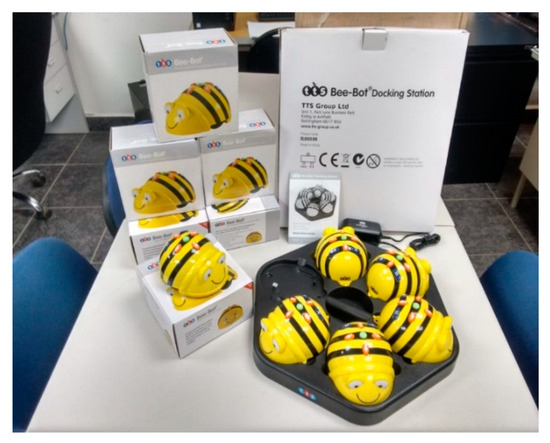 Figure 1. Kit for the development of the project.
Figure 1. Kit for the development of the project.
- Some mats have been produced to develop the first activities. It can be seen in Figure 2, one which it is sought to familiarize preschool children with numbers from one to twelve; for this purpose, images that can attract the attention of children have been used.
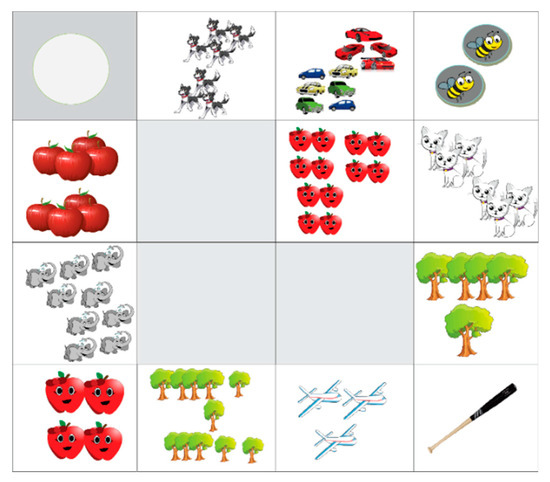 Figure 2. Mat to learn to count directed toward children at preschool level.
Figure 2. Mat to learn to count directed toward children at preschool level.
- Some rubrics have been established to collect the data obtained in the practical sessions. Table 2 presents one of these rubrics.

Table 2.
Rubric for first grade.
Table 2.
Rubric for first grade.
| Assessment | Description |
|---|---|
| 5 points | Understanding and complete achievement of the challenge, without the teacher’s help. |
| 4 points | Understanding and significant achievement of the challenge, with minimal interventions or teacher aids. |
| 3 points | Understanding and fairly satisfactory achievement of the challenge, receiving help from the teacher throughout the process, but not step by step. |
| 2 points | Understanding and achieving the challenge with step-by-step help from the teacher. |
| 1 point | The solution to the challenge was initiated, but it was not completed. |
| 0 points | No attempt was made to solve the assigned challenge. |
An important aspect that was considered for the successful development of the project was the training of the teachers who participated in the project. Figure 3 shows part of the training for teachers, where they are being instructed in the creation of rugs. He was also trained in the operation of Bee Bot as can be seen in Figure 4.
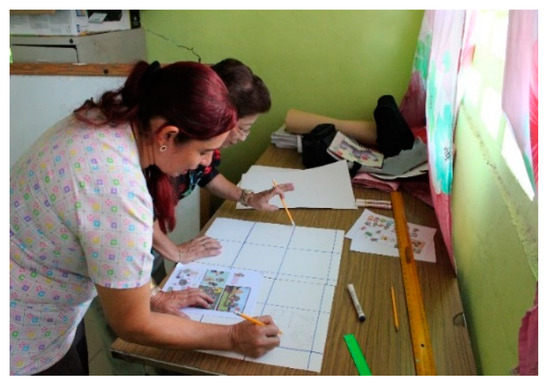
Figure 3.
Practical workshop for making rugs.

Figure 4.
Practical workshop on the use of Bee Bot.
The training of the children was given within the activities of the project.
Figure 5 shows the application of some of the activities in a group by each level (kindergarten and first grade) for each of the 3 schools: Lassonde, La Pita and Leopoldina Field, developed during the second stage of the project in the that the students carried out the challenges that were indicated to them, working as a team and understanding better the sequence of programming with which they had to give the instructions to the Bee-Bot.
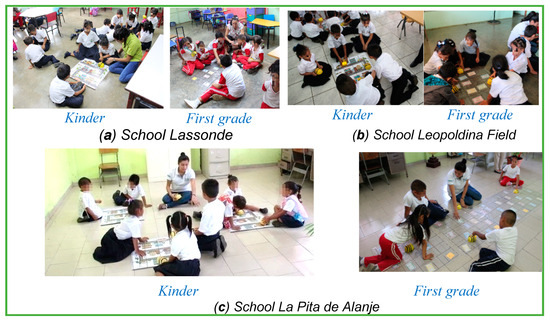
Figure 5.
Practical workshop on the use of Bee Bot with students.
After the development of a set of activities in each of the schools participating in the project, an analysis of the results was carried out. Figure 6 shows how many students participated by school per academic level in the pre-test.
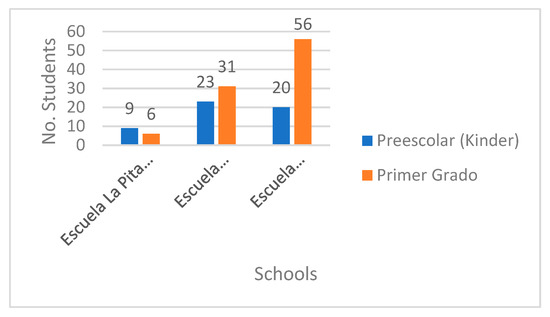
Figure 6.
Number of students who participated in the pre-test.
Table 3 shows the results in terms of the number of students who obtained lower scores in the pre-test. A student from La Pita school and four students from Leopoldina Field needed considerable help, framed in red. While, at Lassonde school, the lowest score is reflected as occasional help framed in green. In the three schools most of the students managed to develop the activity with a minimum of help and without help.

Table 3.
Data of number of kindergarten students by scale of evaluation.
One of the variables evaluated in the pre-test was Robotics Resources and Programming Sequence. In this sense, and based on Table 3, the results of the three schools were analyzed jointly, where the students managed to use “Bee-Bot” and solve the challenges with a programming sequence of a minimum of help in 38%, 28% manage to solve them without help, 24% manage to solve them with occasional help; while 10%, that is, five students solve with considerable help as shown in the red box. This can be seen in Figure 7.

Figure 7.
Valuation for the items of use of robotics resource and programming sequence.
One of the variables evaluated was teamwork. Figure 8 shows the results of the total number of students from the three schools. It can be seen that 40% of the students manage to work as a team with minimal indications, 29% do it without indicating anything, 21% do it with occasional help, while 10% of the students of La Pita and Leopoldina Field they do it with considerable help. It is evident that teamwork is an important component for the achievement of objectives, in turn allows students to develop fellowship skills.
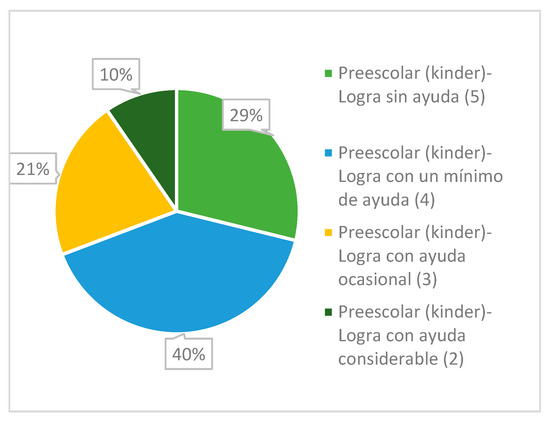
Figure 8.
Valuation for the items in teamwork.
Due to space limitations, it is not possible to put all the variables analyzed in the pre-test for pre-kindergarten.
Next, the results obtained in the evaluation of the first-grade students in the pre-test are described.
Figure 9 shows that students in Leopoldina Field, La Pita and Lassonde schools build solutions without help and with a minimum of help. While the 13 students from the Leopoldina Field schools are kept in red and 2 students from the Lassonde school have difficulty in building practical solutions with occasional help framed in green.
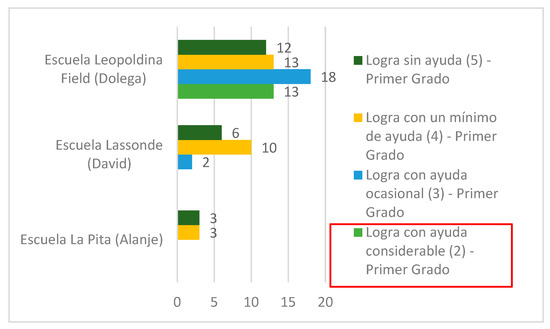
Figure 9.
Valuation for the item build solutions.
Other variables evaluated at this level were Robotics Resources, programming sequence and inquiry learning. The students in the three schools made use of «Bee-Bot» executing the programming sequences, learning by themselves to do them without help and with a minimum of help, performing the challenges adequately. However, there are children who find it difficult to use the robot with considerable help reflected in the school Leopoldina Field are 13 students who are under this condition, marked in a red box (see Figure 10).
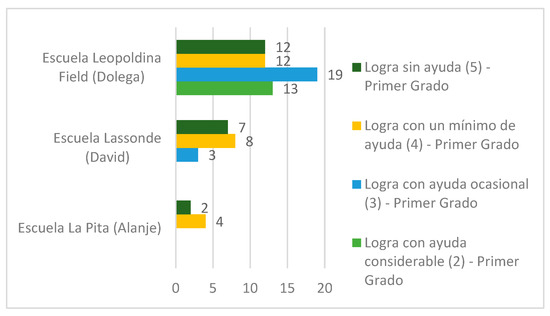
Figure 10.
Valuation for the item robotics resources, programming sequence and learning by inquiry.
Making a global analysis after having applied the pre-test in the Lassonde and La Pita Schools, the students did not show significant deficiency in their learning in the implementation of the project. However, 13 students of the Leopoldina Field School obtained a poor evaluation, this means that the student was becoming familiar with the use of “Bee-Bot” so it was difficult for him to perform the instructions that were indicated. In addition, the three schools remained in a rating range such as: good and excellent (see Figure 11).
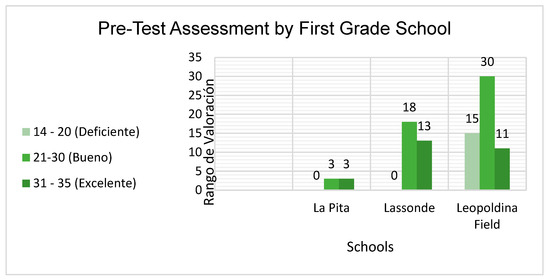
Figure 11.
Assessment of the pre-test to first grade students.
5. Conclusions
After concluding one of the stages of the project, some conclusions can be generated.
The teaching-learning processes in the public sector tend to be complex, mainly when activities such as meetings, strikes, work stoppages are carried out, which require the suspension of classes, or when incidents occur such as the lack of drinking water supply that also force the suspension of classes, this usually happens frequently. In this sense, many times the activities and content had to be reprogrammed, which affected the students and the development of the project.
The ignorance of the numbers in the specific case of first grade, in some students did not allow to advance as planned. However, adjustments were made in the activities to achieve the proposed objectives, it should be noted that this problem was presented in the 3 schools where the project was developed.
By applying the tests to the students of the three schools where the project was developed and implemented, it was possible to measure their progress in learning, if they did or did not comply with the instructions given to them. It was concluded that there are some children with a deficiency in learning mathematics.
Some positive points of the experience such as teamwork, cooperative learning, fun, motivational activities, they are part of the experience of this project.
As future work, we intend to continue implementing more activities in order to detect learning difficulties, features of hyperactivity, dyscalculia, among others.
Author Contributions
Conceptualization, investigation, methodology, supervision, project administration, formal analysis, validation, writing—original draft preparation, L.M.; Resources, methodology, investigation, data curation, I.M.; Resources, methodology, writing—review and editing, J.G.; Resources M.N.; Conceptualization, writing—review and editing, V.V.
Funding
This research is funded by the National Secretary of Science, Technology and Innovation (SENACYT—for its initials in Spanish), grant number, under the Program to Promote Innovation in Science Learning 2018.
Acknowledgments
To the SENACYT for the financing of this project and to the participating schools for the collaboration provided.
Conflicts of Interest
The authors declare no conflict of interest.
References
- Editorial Nobbot. Carlos Magro: El Cambio de la Educación a Través la Tecnología es aún una Asignatura Pendiente-Nobbot. 2017. Available online: https://www.nobbot.com/firmas/educacion-tecnologia/ (accessed on 26 June 2019).
- Edmar, M.C.; García, M.; Luz, P.; Quintero, M.S.; Guia Didáctica Para el Responsable del Programa de Robótica Educativa Directorio Prof. Pedro torres FÉLIX Subsecretario de Educación Básica. 2014. Available online: http://docente.dtesepyc.gob.mx/system/files/guia_didactica_robotica-2014-2015.pdf (accessed on 26 June 2019).
- Chen, G.; Shen, J.; Barth-Cohen, L.; Jiang, S.; Huang, X.; Eltoukhy, M. Assessing elementary students’ computational thinking in everyday reasoning and robotics programming. Comput. Educ. 2017, 109, 162–175. [Google Scholar] [CrossRef]
- Pertejo-López, J.; Programación Gráfica y Robótica Para Fomentar la Competencia Matemática. June 2017. Available online: https://reunir.unir.net/handle/123456789/5717 (accessed on 26 June 2019).
- Monsalves González, S. Estudio sobre la utilidad de la robótica educativa desde la perspectiva del docente. Rev. Pedagog. 2011, 32, 81–117. [Google Scholar]
- Moreno, I.; Muñoz, L.; Serracín, J.R.; Quintero, J.; Pittí Patiño, K.; Quiel, J. La robótica educativa, una herramienta para la enseñanza-aprendizaje de las ciencias y las tecnologías. Teoría la Educ Educ y Cult en la Soc la Information 2012, 13, 74–90. [Google Scholar]
- López Ramírez, P.A.; Andrade Sosa, H. Aprendizaje con robótica, algunas experiencias. Rev. Educ. 2013, 37, 43–63. Available online: http://www.redalyc.org/articulo.oa?id=44028564003 (accessed on 13 May 2019). [CrossRef]
- Benavides, F.; Otegui, X.; Aguirre, A.; Andrade, F. Robótica Educativa en Uruguay: De la Mano del Robot Butiá. 2013. Available online: https://www.researchgate.net/publication/291831657_ROBOTICA_EDUCATIVA_EN_URUGUAY_DE_LA_MANO_DEL_ROBOT_BUTIA_EDUCATIONAL_ROBOTIC_IN_URUGUAY_BY_THE_HAND_OF_BUTIA_ROBOT (accessed on 2 April 2019).
- Misirli, A.; Komis, V. Robotics and Programming Concepts in Early Childhood Education: A Conceptual Framework for Designing Educational Scenarios BT-Research on e-Learning and ICT in Education: Technological, Pedagogical and Instructional Perspectives; Karagiannidis, C., Politis, P., Karasavvidis, I., Eds.; Springer: New York, NY, USA, 2014; pp. 99–118. [Google Scholar] [CrossRef]
- Di Lieto, M.C.; Inguaggiato, E.; Castro, E.; Cecchi, F.; Cioni, G.; Dell’Omo, M.; Laschi, C.; Pecini, C.; Santerini, G.; Sgandurra, G.; et al. Educational Robotics intervention on Executive Functions in preschool children: A pilot study. Comput. Hum. Behav. 2017, 71, 16–23. [Google Scholar] [CrossRef]
- González, Y.A.C.; Muñoz-Repiso, A.G.-V. Development of computational thinking and collaborative learning in kindergarten using programmable educational robots. In Proceedings of the 5th International Conference on Technological Ecosystems for Enhancing Multiculturality-TEEM Cádiz, Spain, 18–20 October 2017; ACM Press: New York, NY, USA, 2017; pp. 1–6. [Google Scholar] [CrossRef]
- Taborda, H.; Medina, D.; Programación de Computadores y Desarrollo de Habilidades de Pensamiento En Niños Escolares: Fase Exploratoria. Cali. 2012. Available online: http://eduteka.icesi.edu.co/pdfdir/Icesi_Investigacion_Scratch_FaseI.pdf (accessed on 15 June 2019).
Publisher’s Note: MDPI stays neutral with regard to jurisdictional claims in published maps and institutional affiliations. |
© 2019 by the authors. Licensee MDPI, Basel, Switzerland. This article is an open access article distributed under the terms and conditions of the Creative Commons Attribution (CC BY) license (https://creativecommons.org/licenses/by/4.0/).